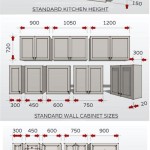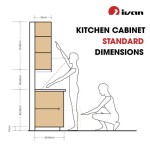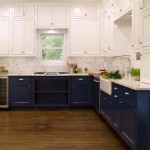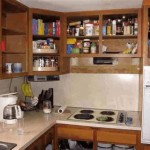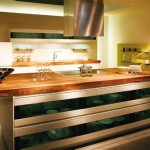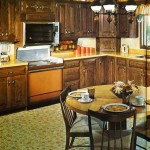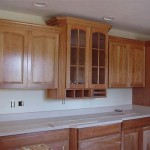How To Paint And Antique Kitchen Cabinets
Antiquing kitchen cabinets is a cost-effective way to breathe new life into a kitchen without undertaking a full renovation. By employing specific painting techniques, cabinets can be transformed to mimic the look of aged furniture, adding character and charm to the space. This process, while requiring patience and attention to detail, is manageable for most homeowners with basic DIY skills. The following guidelines outline the necessary steps and considerations for successfully painting and antiquing kitchen cabinets.
Before commencing any work, a comprehensive understanding of the necessary preparation, techniques, and materials is vital. Failing to adequately prepare surfaces or using inappropriate products can lead to unsatisfactory results, including poor adhesion, uneven finishes, and premature wear. This article will delve into the intricacies of each stage, ensuring a successful and durable antiqued finish on kitchen cabinets.
Key Point 1: Preparation is Paramount
The foundation of any successful painting project is thorough preparation. This phase involves cleaning, sanding, and priming the cabinets to ensure proper adhesion of the paint and antiquing glaze. Neglecting this preparation can lead to peeling, chipping, and an overall compromised finish.
First, remove all cabinet doors and drawers. Label each piece with painter's tape and a marker, noting its location. This will prevent confusion during reassembly. Remove all hardware, including knobs, pulls, hinges, and any other decorative elements. Store the hardware in labeled bags to keep everything organized and prevent loss.
Clean the cabinet doors, drawers, and frames thoroughly. Use a degreasing cleaner, such as trisodium phosphate (TSP) or a TSP substitute, to remove dirt, grease, and grime. These substances can hinder paint adhesion and compromise the final finish. Rinse the surfaces with clean water and allow them to dry completely.
Sanding is critical for creating a surface that paint can effectively grip. Use a medium-grit sandpaper (around 120-grit) to lightly sand all surfaces. Focus on areas with existing finishes, imperfections, or raised grain. The goal is not to remove the existing finish entirely but to create a slightly rough surface for the primer to adhere to. After sanding, use a tack cloth or a damp cloth to remove all sanding dust. Dust is a common cause of imperfections in the paint finish.
Priming is an essential step, especially when painting over existing finishes or when working with bare wood. Primer seals the surface, provides a uniform base for the paint, and improves adhesion. Choose a high-quality primer specifically designed for cabinets. Oil-based primers are generally recommended for their superior adhesion and stain-blocking properties, but water-based primers are also viable options, especially for latex paints. Apply the primer in thin, even coats, following the manufacturer's instructions. Allow the primer to dry completely before proceeding to the next step. Lightly sand the primed surface with a fine-grit sandpaper (around 220-grit) to remove any imperfections and create an even smoother surface for the paint.
Key Point 2: Painting Techniques and Material Selection
Selecting the right paint and applying it correctly are crucial for achieving a durable and aesthetically pleasing finish. The choice of paint, application method, and number of coats all contribute to the final outcome.
For kitchen cabinets, durable and washable paints are essential. Options include latex paints, alkyd paints, and enamel paints. Latex paints are water-based, easy to clean, and low in VOCs (volatile organic compounds). Alkyd paints are oil-based and offer excellent durability and a smooth finish. Enamel paints are known for their hardness and resistance to wear and tear. Consider the existing finish, desired sheen, and environmental concerns when selecting paint.
Apply the paint in thin, even coats using a high-quality brush, roller, or sprayer. Brushes are suitable for smaller areas and detailed work, while rollers are better for larger, flat surfaces. Sprayers provide the smoothest finish and are ideal for achieving a professional look. Regardless of the application method, avoid applying the paint too thickly, as this can lead to drips, runs, and an uneven finish. Allow each coat of paint to dry completely before applying the next. Two coats of paint are typically sufficient for achieving full coverage and a durable finish.
Between coats, lightly sand the painted surface with a fine-grit sandpaper (around 320-grit) to remove any imperfections and create a smoother surface for the next coat. This step, known as "de-nibbing," is essential for achieving a professional-looking finish. After sanding, remove all sanding dust with a tack cloth or a damp cloth.
Consider the paint sheen when selecting the paint. Satin or semi-gloss sheens are typically recommended for kitchen cabinets because they are durable, easy to clean, and offer a subtle sheen. Matte sheens are less durable and more difficult to clean, while high-gloss sheens can be too reflective and show imperfections more easily.
Key Point 3: Antiquing Methods and Glazing Techniques
The antiquing process involves applying a glaze or other antiquing medium to create the appearance of age and wear. This step requires careful application and blending to achieve a natural and authentic look. Various techniques can be employed to achieve different antiqued effects.
Several antiquing mediums are available, including antiquing glazes, waxes, and stains. Antiquing glazes are the most common choice for kitchen cabinets because they are easy to apply and blend. Choose a glaze that complements the paint color and desired antiqued effect. Waxes and stains can also be used, but they may require more skill and experience to apply effectively.
Prior to applying the antiquing glaze to all the surfaces, test the glaze on a hidden area of the cabinet to ensure that the color and effect are satisfactory. This will prevent any unwanted surprises and allow for adjustments to the glaze color or application technique.
Apply the antiquing glaze liberally to a small section of the cabinet, using a brush or a rag. Immediately wipe away the excess glaze with a clean, lint-free cloth, leaving glaze in the crevices, corners, and details. The amount of glaze left behind will determine the intensity of the antiqued effect. Experiment with different wiping techniques to achieve the desired look. For example, wiping in the direction of the wood grain can create a more subtle and natural effect.
Several techniques can be employed to enhance the antiqued effect. Dry brushing involves lightly dipping a dry brush into the glaze and applying it to the surface in short, irregular strokes. This technique can create a subtle, textured effect. Sponging involves dabbing the glaze onto the surface with a sponge, creating a mottled effect. Cracking involves applying a crackle medium between coats of paint to create the appearance of aged, cracked paint. Chipping involves lightly chipping the paint with a sharp tool to simulate wear and tear.
After applying the antiquing glaze, allow it to dry completely according to the manufacturer's instructions. Once dry, apply a clear topcoat to protect the finish and enhance its durability. Choose a topcoat that is compatible with the paint and glaze used. Apply the topcoat in thin, even coats, following the manufacturer's instructions. Allow the topcoat to dry completely before reassembling the cabinets.
Inspect the finished cabinets for any imperfections or areas that require touch-ups. Use a small brush or a cotton swab to apply touch-up paint or glaze as needed. Allow the touch-ups to dry completely before reassembling the cabinets.
Reattach the hardware to the cabinet doors and drawers. Use the labeled bags to ensure that each piece of hardware is reinstalled in its original location. Carefully rehang the cabinet doors and reinsert the drawers into the cabinet frames. Adjust the hinges and drawer slides as needed to ensure that the doors and drawers open and close smoothly.
Clean the surrounding area and dispose of any used materials properly. Allow the cabinets to fully cure for several days or weeks before using them extensively. This will allow the paint and glaze to fully harden and bond to the surface, ensuring a durable and long-lasting finish.

Antiqued Cabinets Antique White Kitchen Home Decor

Cabinet Refinish Diy Simple Paint And Antique Glaze Kitchen Cabinets

Painted Kitchen Cabinet Details Antique White Cabinets Renovation

Kitchen Cabinet Reveal Painted Oak

Kitchen Transformation In Antique White Milk Paint Cabinets Diy Makeover

Antique Painted Cabinets Tips And Techniques To Try At Home Family Handyman

Painting Kitchen Cabinets Antique White Pictures Ideas

The Best Antique White Paint For Kitchen Cabinets And Other Colors Too Jennifer Rizzo

Antique White Kitchen Cabinets General Finishes Design Center

Antiqued Kitchen Crown Molding
Related Posts

